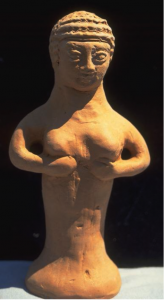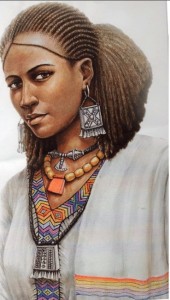“And Jacob said to Joseph, “El Shaddai appeared to me at Luz in the land of Canaan, and He blessed me, and said to me, ‘I will make you fertile and numerous…’ And Shaddai who blesses you…blessings of the breast and womb.” Genesis 48:3-4; 49:25
“God also spoke to Moses and said to him: ‘I am the Lord. I appeared to Abraham, Isaac, and Jacob as El Shaddai, but I did not make Myself known to them by my name Yahweh.” Exodus 6:3
God of the Patriarchs and Matriarchs
Rooted in a very old poetic tradition, the divine name Shaddai occurs 48 times in the Hebrew Bible and has traditionally been translated as Almighty. The early Hebrew ancestors of Israel “worshipped the supreme god under various appellations, such as El (as among the North Canaanites of Ugarit), (El-) ‘Elyon, (El-) Saddai” (Albright, p.191). Perhaps the deity’s name is related to Shaddai, a late Bronze Age Amorite city on the banks of the Euphrates River (in what is now northern Syria). It has been surmised that Shaddai was the god worshipped in this area, an area associated with Abraham’s home. It is “quite reasonable to suppose that the ancestors of the Hebrew brought it [Shaddai] with them from northwestern Mesopotamia to Palestine” (Albright, p.193). The early patriarchs and matriarchs then would have perceived Shaddai as their chief god. Continue reading El Shaddai: The God with Breasts



